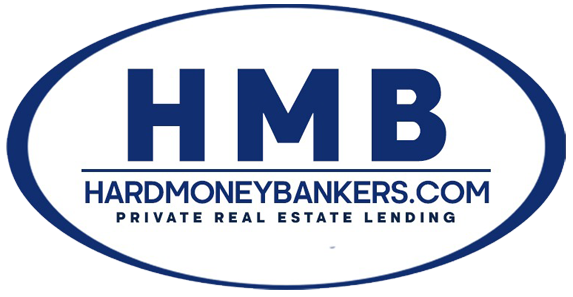You’re standing in front of a distressed Baltimore row home. The seller needs to close in 10 days. Traditional banks would laugh at that timeline. But I’ve funded deals like this in 48 hours. The difference between securing this property and watching another investor snatch it up comes down to understanding exactly what hard money lenders need from you.
After funding over 4,000 loans since 2007, I’ve seen every type of deal cross my desk. The investors who get funded aren’t necessarily the ones with perfect credit or deep pockets. They’re the ones who understand what lenders actually look for. They present their deals properly. Most importantly, they avoid the mistakes that kill loan applications before they even get reviewed.
What You’ll Learn
- Core Requirements That Actually Matter
- Maryland’s Unique Lending Environment
- Understanding ARV and LTV Calculations
- Documentation That Gets Deals Funded
- Exit Strategies Lenders Trust
- Costly Mistakes to Avoid
- Comparing Maryland Lenders
- Your Next Steps
Core Requirements That Actually Matter
Credit scores matter less than you think. While traditional banks won’t touch you below 700, I’ve funded profitable deals for investors with scores in the 500s. The property itself is your primary qualification. If the numbers work, if the ARV makes sense, and if you have a clear plan, your personal credit becomes secondary.
Here’s what I actually evaluate when a loan application hits my desk: First, the property’s after-repair value compared to your total loan request. Second, your skin in the game – typically 20-25% down payment shows you’re committed. Third, your exit strategy and whether it’s realistic for the Maryland market. Fourth, your track record if you have one, though first-timers can still qualify with the right deal.
Jason Balin from Hard Money Bankers puts it perfectly with his “4 C’s” framework: Collateral, Character, Capacity, and Credit. Notice how collateral comes first. Some institutional-backed lenders like require minimum FICO scores of 680, but many of us are more flexible when the deal itself is strong.
The loan-to-value ratio typically ranges from 60% to 65% of the after-repair value in Maryland. If your property will be worth $200,000 after renovation, you’d probably qualify for $120,000 to $130,000 in financing. Some lenders push this higher, but conservative underwriting tends to protect both parties in the long run.
Maryland’s Unique Lending Environment
Maryland’s commercial loan laws work in your favor. Unlike consumer loans, business-purpose loans for investment properties aren’t subject to the same interest rate caps. This means lenders can price risk appropriately, which actually increases your access to capital. Without this flexibility, many deals simply wouldn’t get funded.
Baltimore City versus Baltimore County is a critical distinction that affects everything from property values to permit requirements. I’ve seen deals fall apart because investors didn’t understand that crossing from one jurisdiction to another can completely change your comparable sales analysis. When pulling comps, staying within the same county isn’t just recommended – it’s ESSENTIAL for accurate valuations.
The foreclosure timeline in Maryland is another crucial factor. While owner-occupied properties have extensive protections that can stretch foreclosure to 270 days or more, investment properties face a much faster commercial foreclosure process. The power of sale provision in most hard money deeds of trust means defaulting could cost you the property in as little as 30-60 days for true commercial properties. This isn’t meant to scare you – it’s meant to emphasize why having multiple exit strategies matters.
Historic districts, particularly CHAP properties in Baltimore, present unique challenges. Many hard money lenders won’t touch these deals because the renovation restrictions and approval processes can blow timelines and budgets. If you’re eyeing a property in Federal Hill or Canton’s historic sections, make sure your lender has experience with these complications.
Understanding ARV and LTV Calculations
After-repair value drives everything in hard money lending. But here’s where investors often go wrong: they use optimistic comparables. I calculate ARV using the three lowest active listings and three lowest recent sales of renovated properties within 0.25 miles in Baltimore City. This conservative approach might lower your loan amount, but it prevents you from being underwater when it’s time to sell.
The loan-to-cost versus loan-to-value distinction confuses new investors constantly. LTV is based on the property’s future value after repairs. LTC is based on your total project cost including purchase and renovation. A lender might offer 85% of purchase price and 100% of rehab costs, but cap the total at 65% of ARV. Understanding these limits helps you structure deals that actually close.
Let me give you an example deal that would probably get approved: Purchase price of $100,000, renovation budget of $50,000, and an ARV of $220,000. Your total project cost is $150,000. At 65% ARV, you could borrow up to $143,000, which nearly covers your entire project cost. But if that same property only had an ARV of $180,000, you’d need to bring more cash to the table.
Market conditions affect these calculations significantly. In hot neighborhoods like Federal Hill or Hampden, ARVs tend to be more predictable. In transitional areas, I’d use even tighter comp radiuses and more conservative estimates. The goal isn’t to maximize your loan amount – it’s to ensure profitability even if the market softens during your project.
Ready to get your Maryland fix-and-flip funded? Apply now with no cost or obligation here. We can close your deal in as little as 48 hours.
Documentation That Gets Deals Funded
Speed in hard money lending isn’t magic – it’s preparation. When investors claim they need weeks to gather documents, they’re usually starting from scratch. Have these ready before you even identify a property: entity documents (your LLC paperwork), recent bank statements showing your down payment funds, and a one-page summary of your real estate experience or business plan if you’re new.
For the specific deal, you’ll need the fully executed purchase agreement, a detailed scope of work with contractor bids, and your comparable sales analysis. Don’t just send me the Zillow estimate. Show me you’ve actually researched recent sales, understood the renovation levels of those comps, and adjusted for differences. This demonstrates you understand the market, not just the math.
The contractor piece is where deals often stall. Having a licensed, insured contractor with a detailed bid shows you’re serious. Break-down the work by room and trade. Include permit costs, dumpster rentals, and a 10-15% contingency. Contractors who won’t provide detailed bids usually aren’t worth working with anyway.
Photos and video walk-throughs have become increasingly important. I want to see every room, the exterior condition, and any obvious issues like foundation cracks or roof damage. These visuals help me price risk accurately. The clearer picture you provide upfront, the fewer surprises during underwriting, and the faster you get to closing.

Exit Strategies Lenders Trust
Your exit strategy isn’t just a line item on the application – it’s the foundation of loan approval. The two primary strategies each require different preparation. For a flip exit, show me comparable properties that sold quickly, your agent’s marketing plan, and a realistic timeline accounting for seasonal market patterns. Properties listed in November often take longer to sell than those hitting the market in March.
The BRRRR strategy (Buy, Rehab, Rent, Refinance, Repeat) requires proving the property will qualify for conventional financing post-renovation. This means hitting specific debt service coverage ratios and having a lender already identified for the takeout loan. Lenders like Dominion Financial Services specialize in these bridge-to-permanent scenarios, understanding both sides of the transaction.
Always have a backup plan. If your flip doesn’t sell in 60 days, can you refinance and hold? If your refinance falls through, can you sell quickly even at a reduced profit? Presenting multiple exit paths shows sophistication and reduces my risk, which often translates to better terms for you.
Timeline padding is crucial but often ignored. If you think renovation will take 3 months, plan financing for 6. If you expect to sell in 30 days, assume 90. This buffer protects you from the countless delays that plague real estate projects: permit delays, contractor issues, weather problems, or market shifts. Late fees and extension costs can quickly erode profits if you’re racing against your loan maturity date.
Costly Mistakes to Avoid
Overvaluing the ARV is the number one mistake that kills deals. Every investor thinks their renovation will command top dollar. But if three similar properties sold for $180,000, your identical renovation probably won’t fetch $220,000 just because you used nicer tile. Be realistic, not optimistic.
Underestimating renovation costs ranks second. That $30,000 budget becomes $45,000 real fast when you discover foundation issues, outdated electrical, or surprise mold. Factor in permit costs, holding costs during renovation, and the reality that contractors often exceed their initial quotes. A lean budget might get you approved, but it won’t get your project completed.
Insufficient cash reserves destroy more projects than any other factor. You need money for the down payment, yes. But also for the first phase of work before your first draw, for monthly interest payments, for property insurance, utilities, and the dozen unexpected expenses that arise. If you’re putting every dollar into the down payment, you’re already in trouble.
Choosing the wrong lender for your experience level creates unnecessary friction. Some lenders specialize in experienced investors and offer minimal guidance. Others, particularly those focused on first-time flippers, provide more support but might charge higher rates. Match your lender to your needs, not just their advertised rates.
Need funding for your rental property renovation or cash-out refinance? Our collateral-based loans require no tax returns and can close as fast as title work allows. Get started at our application page.
Comparing Maryland Lenders
Not all hard money lenders operate the same way. Rehab Financial Group requires that 650 FICO minimum but offers 100% financing of renovation costs. They’re ideal if you have decent credit but limited cash. Their 75% ARV cap is pretty standard, though their 9-month term with a 3-month extension gives you breathing room.
Dominion Financial Services takes a different approach, offering up to 100% loan-to-cost with no upfront points for qualified borrowers. They emphasize their 48-hour closing capability, which matters when you’re competing against cash offers. Their two decades of experience means they’ve seen every scenario and can often work through complex situations.
Pine Financial offers 90% acquisition financing plus 100% of rehab costs, positioning themselves between the conservative and aggressive lenders. Federal Hill Mortgage and Easy Street Capital both cap at 75% ARV but differ in their borrower requirements and fee structures. Shopping between lenders isn’t just about rates – it’s about finding the right fit for your specific deal and experience level.
The relationship factor often gets overlooked. Some lenders are transactional – they fund your deal and that’s it. Others, like Washington Capital Partners, build long-term relationships with borrowers, offering better terms for repeat clients. If you plan to do multiple deals, starting with a relationship-focused lender can pay dividends over time.
Your Next Steps
Success in hard money lending isn’t about gaming the system or finding loopholes. It’s about preparation, realistic analysis, and understanding what lenders actually evaluate. Start by honestly assessing your financial position. Do you have that 10-15% down payment plus reserves? If not, partnerships might be your path forward.
Next, become an expert in your target market. Know what renovated properties ACTUALLY sell for, not what you hope they’ll sell for. Understand renovation costs by walking through properties with contractors and getting real bids. This education pays for itself in your first successful deal.
Build your team before you need them. Interview contractors, real estate agents, and property managers now. Having these relationships established means you can move quickly when the right opportunity appears. Speed wins in real estate, but only when paired with preparation.
Finally, remember that your first deal doesn’t need to be perfect. It needs to be profitable enough to cover the high cost of hard money financing while leaving room for mistakes. Target properties with clear value-add potential in established neighborhoods. Save the complex historic renovations or transition-area speculation for after you’ve proven yourself.
Ready to fund your next commercial or multi-family property? We close in less than 2 weeks using our own private funds. Apply today – no appraisals, no tax returns required.
The Bottom Line
Maryland’s hard money lending environment offers tremendous opportunity for prepared investors. The speed and flexibility of these loans can be the difference between building a real estate empire and watching from the sidelines. But this isn’t free money or easy money. It’s expensive capital that demands execution.
The investors who succeed understand that hard money is a tool, not a solution. They use it strategically to acquire and improve properties that traditional financing won’t touch. They manage their projects efficiently because every day costs money. Most importantly, they approach each deal with conservative numbers and multiple exit strategies.
I’ve funded thousands of deals and seen every possible outcome. The winners aren’t always the most experienced or best capitalized. They’re the ones who do their homework, present clean deals, and execute their business plans. The requirements I’ve outlined aren’t obstacles – they’re the blueprint for getting funded and building wealth through Maryland real estate.
Your next step is clear. Take action on a real deal. Run the numbers using the conservative methods I’ve shared. Prepare your documentation package. Then reach out to lenders with a professional presentation that shows you understand both the opportunity and the risks. The Maryland market rewards those who move decisively with proper preparation. The question isn’t whether you can qualify for hard money – it’s whether you’re ready to use it profitably.


